Review: In ‘Doggie Hamlet,’ a cast of canines, sheep and, yes, humans — ay, there’s the rub
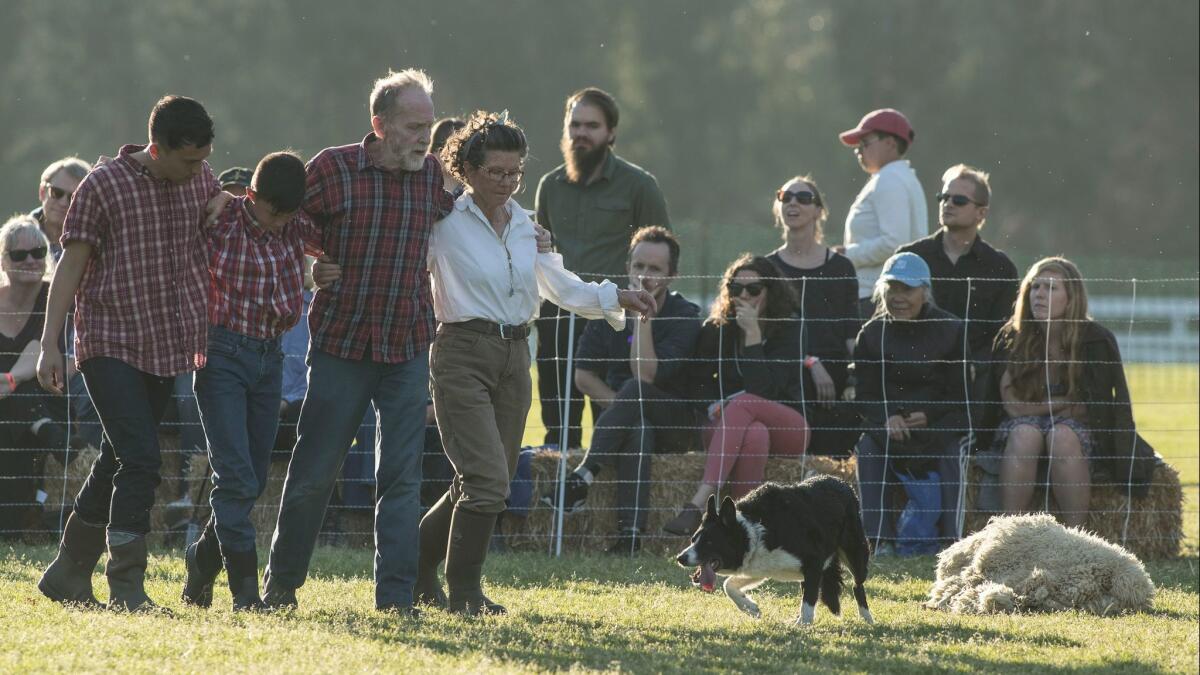
- Share via
To bah or not to bah — that is not the question of “Doggie Hamlet,” a site-specific performance work by choreographer and director Ann Carlson that involves a flock of sheep, three herding dogs, six human performers, a few scattered pelts, plenty of green grass and very little (if any) Shakespeare.
On Saturday at 4 p.m., an arty audience, abandoning its traditional black garb for sportier looks in more durable fabrics, gathered at Will Rogers State Historic Park to sit on bales of hay for the first of two weekend performances of a stylized 70-minute animal act that defies categorization.
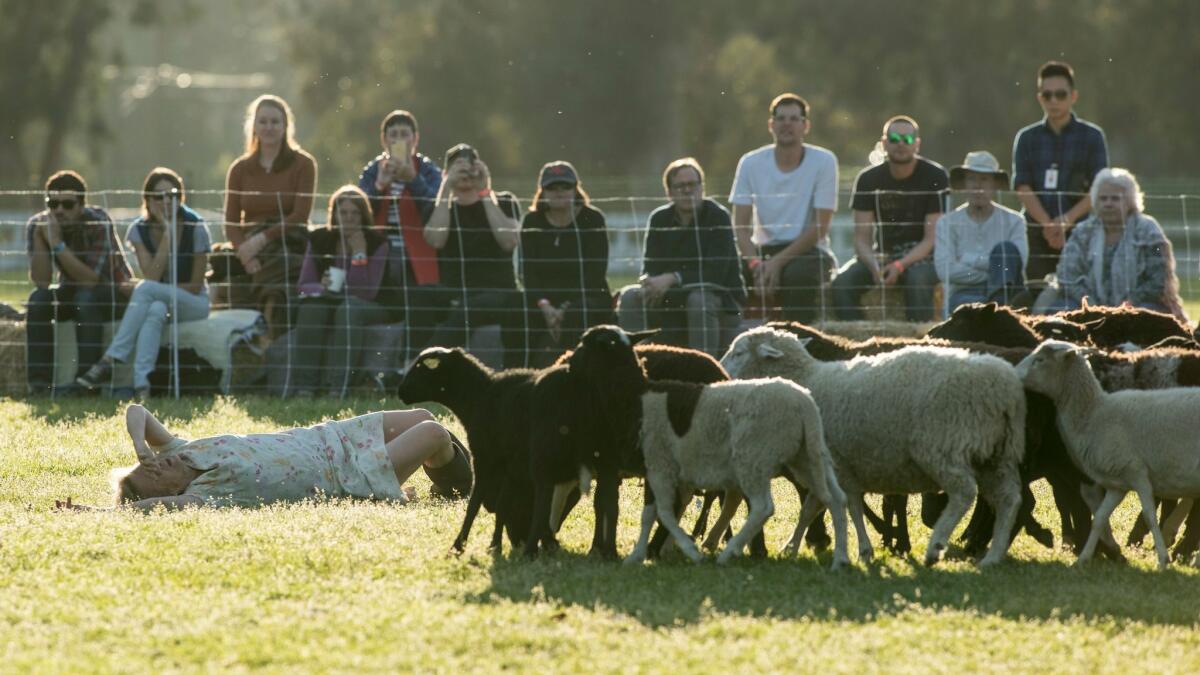
The theatrical composition, presented by the Center for the Art of Performance at UCLA, is characterized by Carlson as “a dance, a living landscape painting, and a 3-D pastoral poem.” Such a description, while still somewhat fuzzy, at least puts you in the ballpark for an event that takes place on a polo field but whose real setting is the bridge between inner and outer landscapes.
Carlson is an interdisciplinary artist whose work explores the boundaries between forms. Worlds that might seem far apart are brought into conversation, as they were in “The Symphonic Body,” in which members of the UCLA community were orchestrated in a symphony of their workday gestures.
The division between art and nature is of special interest to Carlson, whose pieces often bring human beings into choreographic intimacy with other sentient creatures. Hierarchies are challenged in works that make unexpected analogies among species that wouldn’t on the surface seem to have all that much in common.
“Doggie Hamlet” was inspired by “The Story of Edgar Sawtelle,” a novel by David Wroblewski that draws on “Hamlet” and Rudyard Kipling’s “The Jungle Book.” In a program note, Carlson shares that the novel’s 1950s Midwestern setting resonated with her own life. But rather than retell the story in a different form, she responds here to thematic elements rallying around “dogs and death, muteness and devotion.”
Narrative threatened to emerge at points in the production but never really took hold. When language was used, it wasn’t always easy to discern what was being said. Speech ultimately seemed no more consequential than bleating or barking.
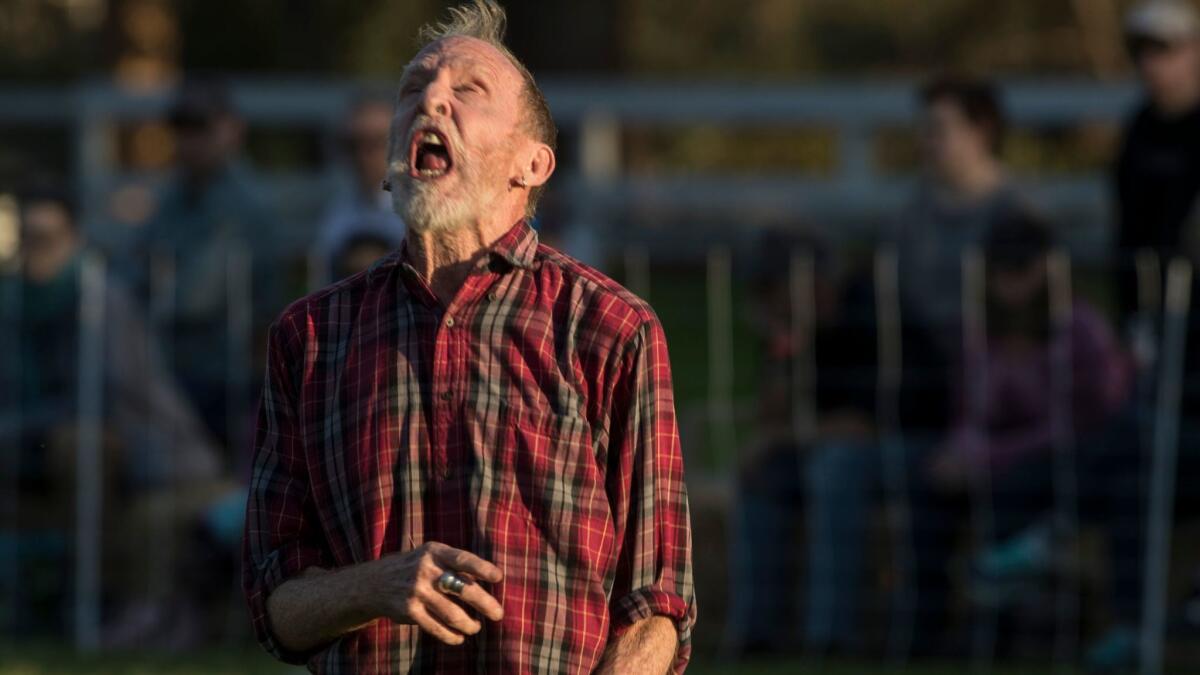
At the start of “Doggie Hamlet,” a woman bisected the field. The pace was deliberate, almost stately. The simple act of walking across this living canvas was arresting. A pattern was momentarily imposed. Nature barely stirred, but something in the air lingered.
After other human figures made their entrances, the sheep, under the control of a sportily attired shepherd (Diane Cox), were lured in. The dogs, by far the most committed cast members, were brought to a far corner and tied near a tub of water that was used for both bathing and drinking. One dog was released at a time to maneuver the flock in the direction determined by the shepherd.
Before going any further, I should confess that I had never heard of competitive sheep herding before seeing “Doggie Hamlet.” The novelty therefore held much fascination for me. The sight of these woolly darlings trying to gobble as much grass as possible while moving instinctively away from whichever control freak canine happened to be badgering them was curiously enthralling.
Cox blew her whistle and issued commands in a voice that was low but authoritative. When she said, “Lie down!” the dog did so without delay. The animal movements were repetitive though not tediously so. After several turns around the perimeter of the field, variations were introduced, but the basic meditative rhythm was preserved.
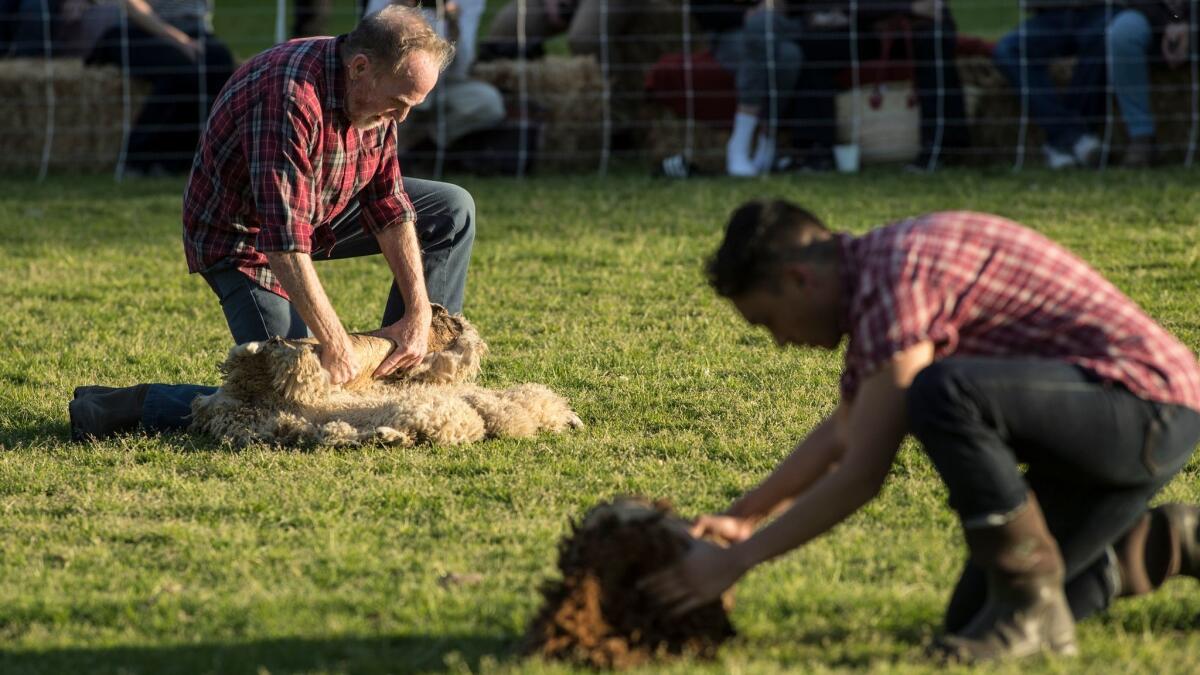
Mostly, I envied the sheeps’ unfailing solidarity and the dogs’ total dedication to every moment.
The human performers fell in out and of focus. “Never work with animals or children,” advised W.C. Fields, who knew they were natural scene-stealers. I found it difficult to look away from the leashed dogs, which were following the action in the field with eyes that were glistening with melodrama. They couldn’t wait to rejoin the action, but I was riveted by their avidity on the sidelines.
The human choreography, a mixed bag, was most eloquent when stillness alternated with a ghostly minimalism. One segment had individual members of what seemed like a strolling family drop to the ground before being retrieved back into life by the group.
There was no need to contrive a story. The cycle was meaning enough. Ritual unfolded in nature, which enveloped the experience. A growing consciousness of our place in the wider world was unavoidable against the verdant backdrop. The blue sky, the blowing trees in the distance, the changing position of the sun were integral parts of the fluctuating design scheme.
The more “Doggie Hamlet” strove to be theatrical in its final movements, the less powerful it became. The business in which the performers wrapped themselves in pelts and growled at each other and the animals as emblems of death left me blinking as indifferently as the sheep.
I wasn’t sure if the older man’s aggressive antics were supposed to annoy me as much as they did. Others in the audience were laughing, but I wondered why human beings feel compelled to make such a noisy fuss. Does knowledge of mortality have to create so much discordancy?
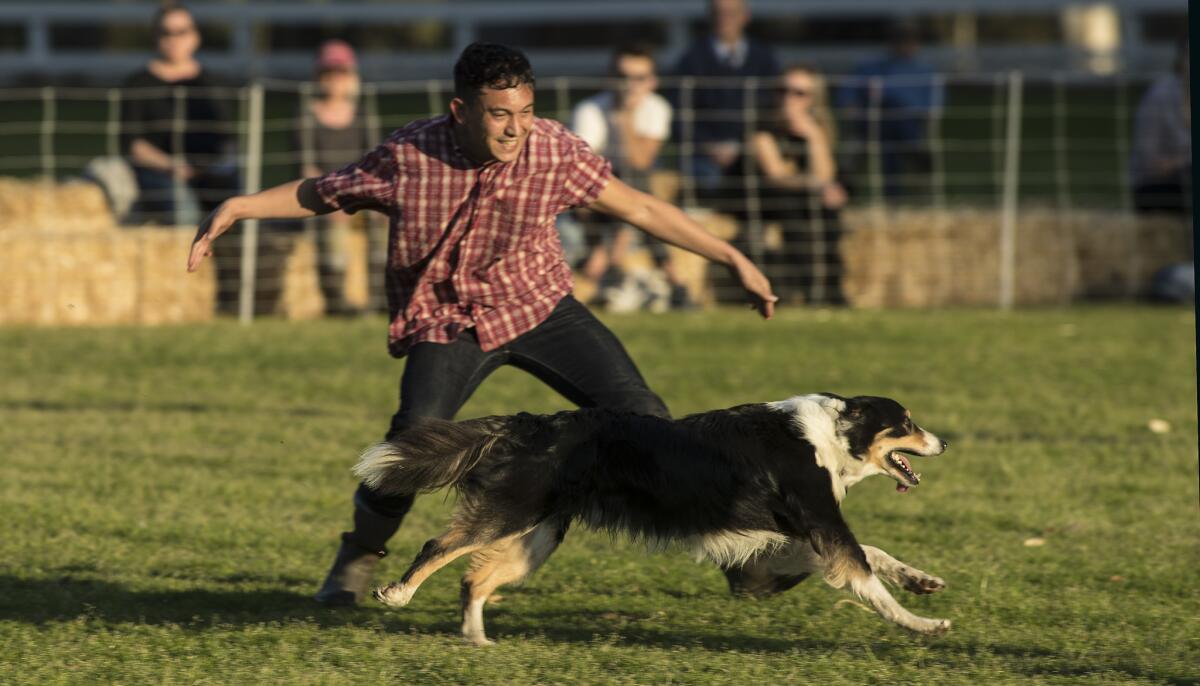
Mostly, I envied the sheeps’ unfailing solidarity and the dogs’ total dedication to every moment. Although corralled into a human spectacle, they managed to transcend it by staying true to themselves.
The human cast, cursed with complexity, didn’t always seem to know how to behave. But profundity was achieved through the total picture. One moment that startled me into new awareness was when a couple of the actors, sweating from their labors, splashed their faces with the water the dogs had been bathing in and drinking.
It was then that the title of “Doggie Hamlet” took on new resonance. In a throwaway gesture, mankind’s complicated consciousness was revealed to be inseparable from its animal condition. “Human nature” suddenly seemed like a marriage of redundant words.
At the curtain call, the biped company patted the earth in obeisance. More majestically, the quadrupeds, inescapably connected to what sustains them, embodied their gratitude.
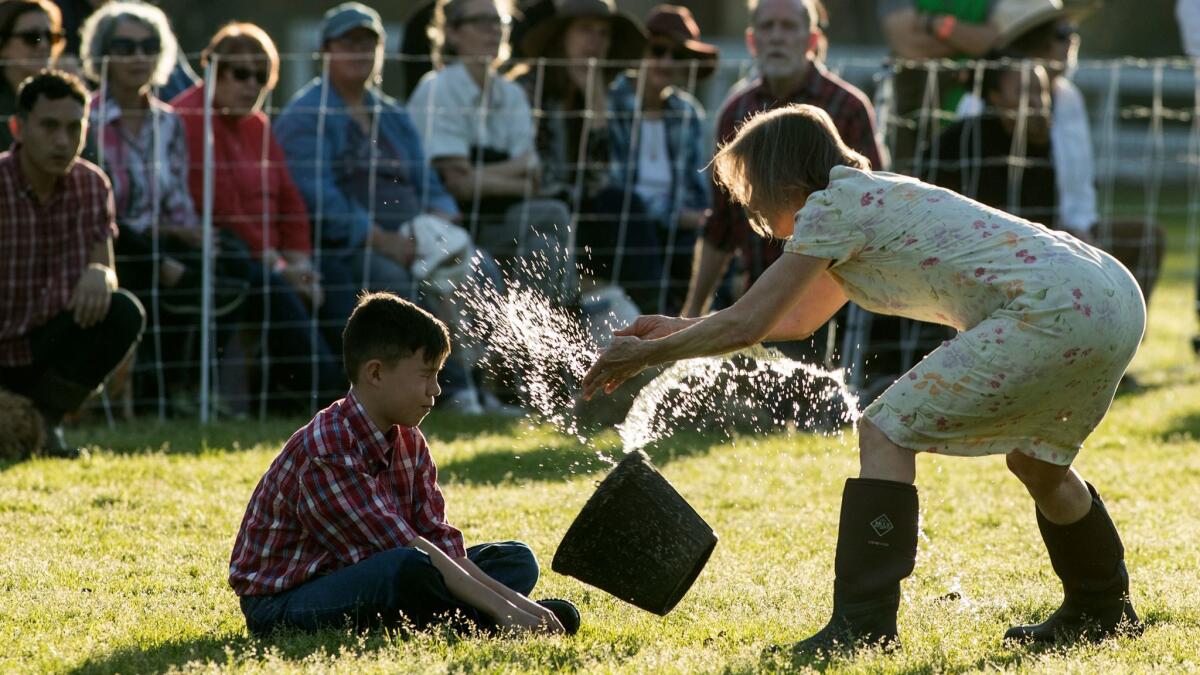
Follow me @charlesmcnulty
MORE THEATER:
Review: ‘Pirates of Penzance,’ a party with piña coladas
Review: Pinter’s ‘The Hothouse’ at Antaeus
‘All the President’s Men’ reading at City Hall
Quiara Alegría Hudes’: three plays on three stages, all at once
More to Read
The biggest entertainment stories
Get our big stories about Hollywood, film, television, music, arts, culture and more right in your inbox as soon as they publish.
You may occasionally receive promotional content from the Los Angeles Times.











